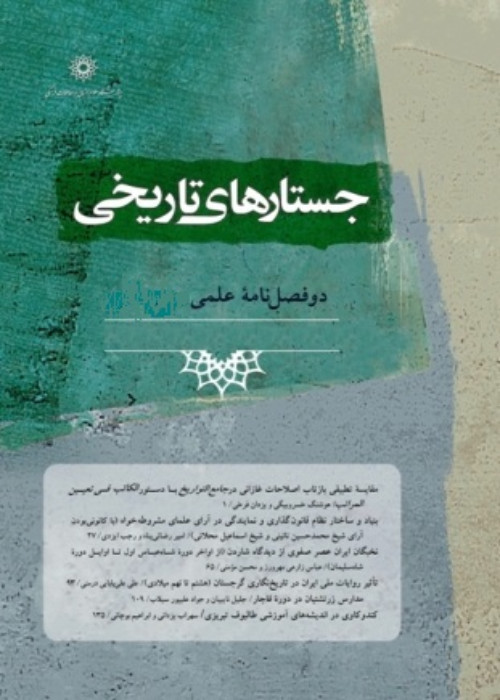Charm and Magic, Talisman and Spell, and Women World in Qajar Era
Author(s):
Abstract:
Tendency to superstitious and using Talismans and spell was common in Qajar Era. Yet this issue was more, or fundamentally, defined as a feminine phenomenon. This kind of view had some roots and sources as well as some effects and results. This paper is going to study its roots and results and ask why and how it exited. It seems that the main reason for defining superstitious as a feminine phenomenon is the superiority of men in comparison with women in Qajar Era. Women usually were considered as weak and powerless creatures. The result of this thought was a kind of women-phobia. This phobia naturally made a condition in which women deprived of their rights to participate in the Constitutional Revolution parliament election. In the middle of Qajar Era, some of Iranian reformists found a meaningful relationship between social lagging and Iranian women lagging. They tried to show the social and historical roots of society problems, like women problems, and challenge the old and traditional thoughts and open a new route for reform in Iran.
Keywords:
women , superstitious , talismans , spell , tradition , society problems , modernism
Language:
Persian
Published:
Jostarha-ye Tarixi, Volume:3 Issue: 2, 2013
Page:
27
magiran.com/p1116050
دانلود و مطالعه متن این مقاله با یکی از روشهای زیر امکان پذیر است:
اشتراک شخصی
با عضویت و پرداخت آنلاین حق اشتراک یکساله به مبلغ 1,390,000ريال میتوانید 70 عنوان مطلب دانلود کنید!
اشتراک سازمانی
به کتابخانه دانشگاه یا محل کار خود پیشنهاد کنید تا اشتراک سازمانی این پایگاه را برای دسترسی نامحدود همه کاربران به متن مطالب تهیه نمایند!
توجه!
- حق عضویت دریافتی صرف حمایت از نشریات عضو و نگهداری، تکمیل و توسعه مگیران میشود.
- پرداخت حق اشتراک و دانلود مقالات اجازه بازنشر آن در سایر رسانههای چاپی و دیجیتال را به کاربر نمیدهد.
In order to view content subscription is required
Personal subscription
Subscribe magiran.com for 70 € euros via PayPal and download 70 articles during a year.
Organization subscription
Please contact us to subscribe your university or library for unlimited access!


